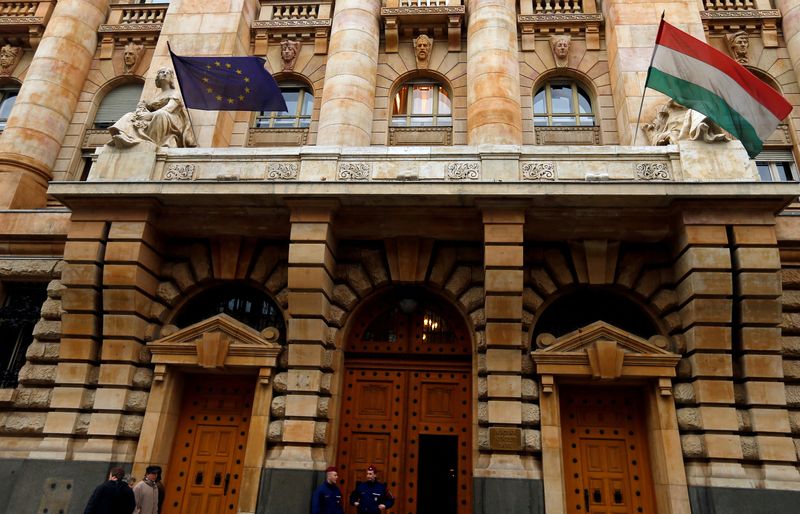By Gergely Szakacs
BUDAPEST (Reuters) - Hungary's central bank is expected to cut its key one-day deposit rate again next week, a Reuters poll showed, as inflation cooled more than expected and the forint currency stabilised after the bank lowered rates last month.
The National Bank of Hungary cut its one-day deposit rate by 100 basis points (bps) to 17% in May and flagged further possible "gradual" cuts as inflation slows, delivering the start of the first such policy easing cycle in Europe.
Eight economists surveyed between June 12 and 16 unanimously forecast another 100 bps cut in the one-day rate to 16% when the bank holds its monthly policy meeting on Tuesday.
The bank launched the emergency one-day deposit rate, the highest in the European Union, in October to shore up the falling forint amid a surge in inflation.
"With the improvement in risk perceptions about the Hungarian economy persisting, we expect the NBH to proceed in normalising its monetary policy by cutting the one-day deposit rate by 100bp to 16%," Morgan Stanley (NYSE:MS) economist Georgi Deyanov said in a note.
"We continue to see the central bank easing in measured 100bp steps at each of its meetings until September and to be more prone to making pauses should HUF weaken significantly rather than accelerating the pace of rate cuts ahead."
The poll projects the central bank will continue to trim rates in coming months, aligning its one-day rate with the 13% base rate in September.
Headline inflation fell more than expected to 21.5% year-on-year in May, easing for a fourth straight month and keeping a path open for the central bank to further unwind some of its sharp interest rate hikes of the past two years.

While the forint has eased around 2% from a 14-month-high scaled on Monday, to around 375 versus the euro, it is still trading near levels seen after the bank's first rate cut late last month.
Analysts expect the bank to cut its base rate by 150 bps to 11.5% by the end of the year, according to the poll, with average inflation seen falling to 5.5% in 2024 from 18.2% projected this year.